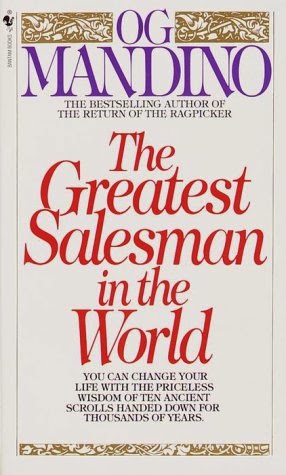NOW, CSL
I was unable to attend the fabulous NOW conference in Arizona this weekend, for women with bleeding disorders, where I was supposed to give a speech on Saturday. This assumes you have a voice. Which I did not. Returning from the Caribbean with a devastating chest cold (I think I inhaled mold from the AC system in the old hotel I slept in) and a voice that made me sound like a serial killer with laryngitis, I opted sadly to stay home and recover. So now (NOW) I don’t have a report on this great event, funded by the way by CSL Behring.
Speaking of which, here’s a book review by our colleague Richard Atwood in North Carolina about a book about CSL, or CSL Behring as we know it now. Even if you don’t read the book, the facts below are interesting. Having a business background, I’m always interested in knowing how these companies formed, and became what they are. Especially while I was in Barbados, a country which imports factor VIII from two companies, CSL Behring being one of them. Some of the there doctors didn’t realize it’s an Australian-based multinational company.
Committed to Saving Lives: A History of the Commonwealth Serum Laboratories
A.H. Brogan, 1990, Melbourne, Victoria, Australia: Hyland House Publishing Pty Limited. 301 pages.
SUMMARY: The government of Australia formed the Federal Serum Institute in 1916 and subsequently changed its name to the Commonwealth Serum Laboratories the following year. Despite its name, CSL had the mission to prepare vaccines, serums, and anti-toxins. As a pioneering public-sector manufacturer, CSL was prepared for the 1918 influenza pandemic by providing the diphtheria and tetanus immunizations. Subsequent public health achievements were the extraordinarily quick provisions of insulin in 1923, penicillin in 1944, Salk antipoliomyelitc vaccine in 1956, anti-D antiserum to prevent Rh disease in 1966, and tuberculosis vaccine. Although CSL had the statutory authority to run a pharmaceutical business, tension persisted for the next 75 years as to whether CSL was a commercial manufacturer or a national public health and research organization. Regardless, the government wanted a profit from a company that provided pharmaceuticals for both humans and domesticated animals.
CSL conducted blood typing research, and then for the Second World War preserved whole blood and dried human serum for blood proteins. Whereas the UK, USA, and Canada used plasma for war casualties, CSL used serum to prevent spreading hepatitis. The war stimulated blood fractionation around the world beginning in 1941, using either the ethanol method developed by Cohn at Harvard or the ether method developed by Keswick in the UK. CSL implemented the Cohn method in 1945 using voluntary non-paid blood donors through the Australian Red Cross. Production began in 1953 for globulin, albumin, and fibrinogen, then in 1961 for AHG using the Cohn method modified by the Blombacks of Sweden, followed by cryoprecipitate until 1969, AHF in 1970, AHF HP (high purity) in 1972, Improved Intermediate Purity AHF in 1979, PPSB (Prothrombin, Proconvertin, Stuart Factor, Haemophilia B Factor) in 1968, and Prothrombinex in 1972. After learning from America in 1982 about the virus that was later to be called HIV, CSL began experiments in 1983 of heating AHF products and then implemented heat sterilization of FVIII products in 1984. CSL also produced the confirmatory Western blotting test for HIV-I beginning in 1984. Meanwhile, CSL upgraded and expanded the facilities for plasma fractionation.
COMMENT: The history of CSL for its first 75 years up to 1990, whose book title has the same acronym, was written by its recently retired personnel director. As an insider, the author confesses to be a partisan, and rightfully highlights the many medical accomplishments, but also includes some of its misfortunes. The book, which includes 121 photographs, 17 pages of Notes, 3 appendices, and a 9-page Index, ends with several questions regarding an uncertain future, whether CSL would continue to be owned by the government or be a candidate for privatization. CSL is a model for a government-owned commercial enterprise in the public health sector that accomplished its mission. It is also a case study for the continual difficulties imposed by government meddling in the public health research, development, and commercial activities that hindered its mission. Blood and blood substitutes were only a small part of the many commercial activities performed by CSL for the citizens of Australia and world-wide.
Great Book I Read
The Greatest Salesman in the World by Og Mandino [Kindle]
 Published in 1968, this has become a timeless classic not just for sales, but for business, for life. A very simple story, set in the time of the birth of Christianity, with profound principles about being your best, making your life, not being a victim to chance but defining who you are, what you are and what you are to become. You can finish this in one sitting, but guaranteed it will stay withyou a long time. You can read this as a business self-help book, or as a way to build better character and life. I read it a long time ago for one and now read it for the other. Much in the style of Paolo Coelo, though Og came first! Five/five stars.
Published in 1968, this has become a timeless classic not just for sales, but for business, for life. A very simple story, set in the time of the birth of Christianity, with profound principles about being your best, making your life, not being a victim to chance but defining who you are, what you are and what you are to become. You can finish this in one sitting, but guaranteed it will stay withyou a long time. You can read this as a business self-help book, or as a way to build better character and life. I read it a long time ago for one and now read it for the other. Much in the style of Paolo Coelo, though Og came first! Five/five stars.
